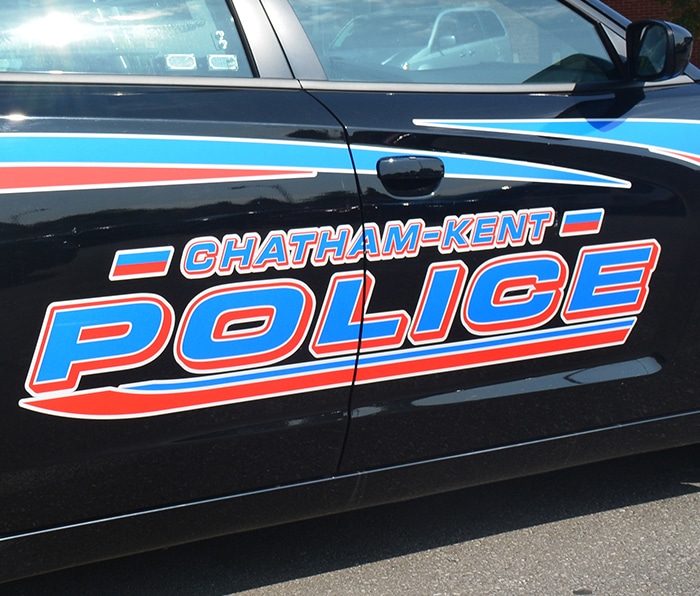
The Chatham Voice recently asked Chatham-Kent Essex provincial candidates a series of questions on key issues.
What is your plan to ensure the cost of electricity is affordable to Ontarians?
Since 2010, the Ontario Liberals have renegotiated and restructured green energy deals, saving more than $5 billion. This saves families $520 over the next five years. Our plan to eliminate the Debt Retirement Charge will strip a further $70 per year from residential hydro bills.
LEADWAVE Technologies from Chatham Voice on Vimeo.
The Ontario Liberals also introduced the Green Energy Benefit, a bill reduction that represents a saving of $4.4 billion in environmental and health–care costs from shutting down coal-fired power generation. While energy surpluses during the transition to clean power created some unusual market conditions, they were less expensive than being in a deficit position at the peak of summer, and our system is now moving back to balance.
The Ontario Liberals will make the best possible use of public funds by focussing assistance with bills on those most in need – low income families and seniors on fixed incomes – through the introduction of the Home Electricity Assistance Program.
What is your policy regarding continued expansion of wind turbines and municipal input into such projects?
The Ontario Liberal Party is committed to investing in renewable energy and doing so in a way that respects communities and gives them a stronger voice. Since Kathleen Wynne came into office, she has been working hard to improve the siting of energy infrastructure in Ontario.
Last summer, we engaged with municipalities, First Nations leaders, community associations, and others to get their feedback. As a result, we have increased local control over renewable siting and brought stability and predictability to procurement.
We changed the Small FIT program rules to give priority to projects partnered with or led by municipalities. For large wind projects, the Ontario Power Authority is creating a new bidding process where projects that have the support of local communities will be given priority.
Are you in favour of the Hydro One nuclear waste storage facility on the shore of Lake Huron?
We are fortunate in Canada to have stringent regulation of our nuclear industry to make it as safe as possible for both people and the environment. This regulation is a federal responsibly, and Ontario Power Generation’s proposed Deep Geological Repository is undergoing a federal panel review, the most comprehensive form of environmental assessment possible under Canadian legislation.
The proposed repository is not for highly radioactive spent fuel, but the low and intermediate level waste it will store—
– items such as coveralls, mops, and tools used in maintaining the power plant— – need to be secured for many thousands of years.
The proposed location is 680 metres below ground and 1.2 km from the lake in stable rock formations that are over 450 million years old. More details can be found at http://www.nwmo.ca/dgr
The decision about whether this project is safe or whether there is a safer alternative must be made by nuclear safety experts, based on the best available geological and technical analysis, in a process that is both transparent and rigorous.
Will your government be in favour of continuing standardized testing?
Teachers’ ongoing assessment and feedback about student work is central to student learning and achievement in classrooms across the province, and no one better understands the true measure of a student’s abilities and knowledge – or is in a better position to assess them – than his or her classroom teacher. When taken together, the results of EQAO and classroom tests provide a more complete picture of a student’s achievement.
In Achieving Excellence, our renewed vision for education, we set out a vision that stresses the importance of having a broad understanding of success. The inclusion of all students in the EQAO assessments provides valuable data and information over time that cannot be obtained through random sample testing. Results for the province, boards, and schools can be tracked over time, providing transparency and accountability.
Is the level of education funding sufficient?
Personally, I could not have achieved what I have or created the jobs I have created without the benefit of a high-quality, publicly funded education, right through to university.
The Ontario Liberals have increased education funding for 10 straight years, including hiring 13,300 additional teachers and rolling out Full Day Kindergarten across the province. Working with our partners in education, we have made significant gains in education. Overall, 71% of students are achieving the provincial standard in Grades 3 and 6 combined, up 17 points from 54% compared to 2002–03.
As the economy emerges from recession, we will continue to invest, while balancing the budget, to give our teachers the support they need to prepare students for high-skill, high-wage jobs in the global economy. This will include introducing a $150 million Technology and Learning Fund to purchase software, tablet computers, and other technology for classroom use and to provide professional development support for teachers to make the best use of this technology.
Does the province need to do more in terms of using education as a tool for job training?
The Ontario Liberals created the Specialist High School Major program and dual-credit programs to make education more relevant to chosen career paths. Eight programs launched locally include agriculture, health, manufacturing, and IT.
Our Youth Jobs Strategy, launched in 2013, is creating training and mentorship opportunities for 30,000 youth across the province, and our 30% tuition tax credit is enabling more students to realize their dream of progressing to college or university education to get the qualifications they need. The popular programs at St. Clair College for powerline technicians and green energy technicians are examples of the kind of training for the jobs of the future that the Ontario Liberals support.
What is the greatest financial challenge facing the province and how would your government deal with it?
The greatest challenge we face is that if we fail to tackle our infrastructure deficit or fail to make the investments needed to compete for the high-skill, high-wage jobs of the future and to partner with business to build made-in-Ontario success stories, our economy will become stuck in a rut. We are emerging from the global recession, but we need to make long-term strategic investments to emerge stronger and bring jobs back to communities like ours.
I have been told time and time again by other business people that Ontario’s infrastructure deficit is costing us investment and well-paid jobs. The Liberal plan to address this, which will also help our municipalities balance their budgets, is one of the reasons I chose to run in this election.
Only the Ontario Liberals will take a balanced approach, making the right investments and protecting the services that matter most to Ontario families while at the same time working to eliminate the deficit by 2017–18. This approach will strengthen the economy so we can create jobs both now and in the future.
A key part of this plan is putting measures in place to reduce spending, and we have seen real results. We are the leanest government in Canada, with the lowest program spending per capita among the provinces. We have beaten our deficit targets for five years in a row, and last year, total spending fell for the first time since 1996.
Another key financial challenge is pensions. If we fail to act now, the cost of fixing the problem will go up and up and may soon become intractable.
Locally are you in favour of forcing provincial arbitrators to consider the ability of municipal governments to pay arbitrated settlements?
Chatham-Kent has a hard time balancing its budget while keeping property taxes in check, thanks to the costs downloaded by the Harris–Eves government. We are committed to lifting burdens from municipalities and local taxpayers, including providing provincial funds for roads and bridges, and to investing in growing the local economy. Without those investments, our municipality will continue to struggle to fund the services our community needs.
Since 2003, we have worked hard to restore trust and stability to the labour relations system, and for the most part, it has worked. We know that the majority of police and firefighter agreements are reached at the bargaining table, without ever going to arbitration.
Our government is committed to developing an arbitration system that is fair and balanced. We know that consensus is needed, and that is why we have brought the Association of Municipalities of Ontario and the firefighters and police associations together. Our goal is to build a sustainable model that works for municipalities, first responders, and taxpayers.
Personally, I am well aware of the differences in the cost of living between Chatham-Kent and the GTA. It is one of the reasons I think this community has a lot to offer.
Do you believe the current health bureaucracy is the most efficient health care for Ontarians?
The system we have today is more efficient and provides a far higher standard of care, with much shorter wait times, than the underfunded system with a centralized Toronto bureaucracy that we inherited after years of PC cuts. Keeping the health-care system affordable and sustainable for future generations requires reform, and that process is ongoing.
The Liberal approach is to move both service provision and management closer to the patient and closer to home so that expensive hospital beds are freed up to handle more acute cases and to reduce wait times.
To this end, we have invested heavily in home care, which now covers 226,000 more people, hired 20,500 new nurses, and 5,000 new doctors and have invested in cutting hospital wait times, including funding more than 20,000 additional procedures at CKHA.
The purpose of the Erie–St. Clair LHIN is to manage all this increased funding, $130 million in healthcare dollars in 2013–14, and coordinate services locally rather than from Toronto. We are also committed to moving some routine procedures out of hospitals and into local clinics to further reduce costs and provide care closer to home.
Ninety-five percent of rural residents now have a family doctor, and we are committed to 100% primary care coverage if re-elected on June 12, a far cry from the acute doctor shortage we inherited from the PCs.





